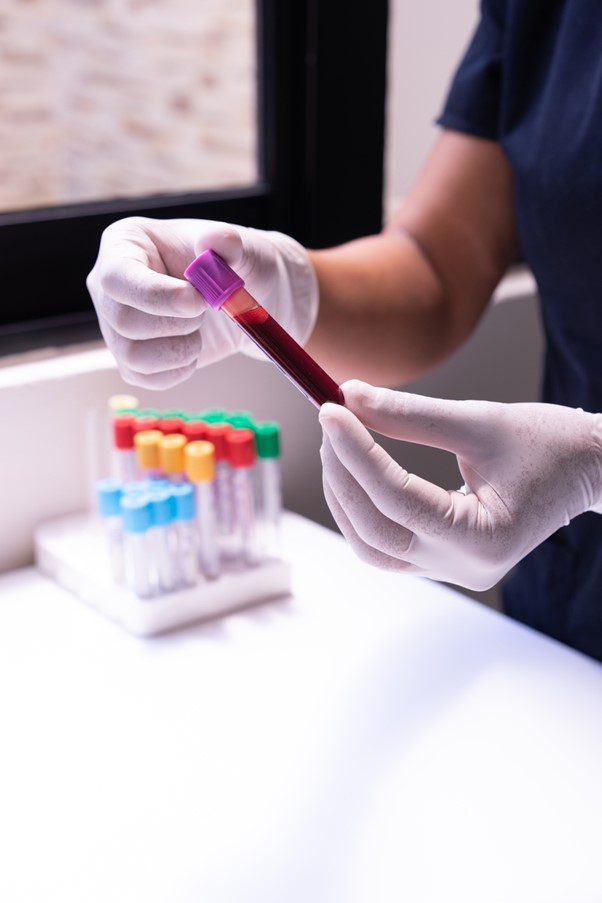A complete blood picture, also called a CBC test, is a simple blood test. It checks your overall health by measuring different parts of your blood. Doctors often use a complete blood picture to spot health problems early. In this blog, you will learn what a complete blood picture is, why it is ordered, how the test is done, and what your results mean. We will also explain normal blood count ranges and answer common questions. This guide will help you understand your blood test results.
What is a Complete Blood Picture?
A complete blood picture, or CBC test, is a common blood test. It measures several parts of your blood, such as:Red blood cells (carry oxygen)White blood cells (fight infection)Platelets (help blood clot)Hemoglobin (the protein in red blood cells)Hematocrit (the amount of red blood cells in your blood)
Because it checks many things at once, a complete blood picture gives a good overview of your health. Doctors use it to find signs of illness, infection, or other problems.
Why is a Complete Blood Picture Ordered?
Doctors order a complete blood picture for many reasons. For example, you may need this test if you have symptoms like tiredness, fever, or bruising. Sometimes, doctors use it as part of a routine checkup. Other times, they use it to:Check for anemia (low red blood cells)Find infections or inflammationMonitor ongoing health conditionsCheck how well treatments are workingLook for bleeding or clotting problems
In addition, a CBC test can help spot blood disorders early. This makes it easier for doctors to treat problems quickly.
How is the Test Performed?
Getting a complete blood picture is quick and simple. First, a nurse or lab worker cleans your skin. Then, they use a small needle to take blood from a vein in your arm. The process usually takes less than five minutes. Afterward, your blood sample goes to a lab for testing. Most people feel only a small pinch during the test. Because the test is safe, there are very few risks.
What Do the Results Mean?
Your complete blood picture results show numbers for each part of your blood. Here is what some of the main results mean:Red blood cells (RBC): Low levels may mean anemia. High levels could mean dehydration or other issues.White blood cells (WBC): High levels often mean infection. Low levels may show a weak immune system.Platelets: Low platelets can cause bleeding. High platelets may mean other health problems.Hemoglobin: Low hemoglobin means less oxygen in your blood. High hemoglobin can be a sign of other conditions.Hematocrit: This shows the percentage of red blood cells in your blood.
Normal blood count ranges can vary by age, sex, and lab. Your doctor will explain what your results mean for you. If your numbers are outside the normal range, it does not always mean something is wrong. Sometimes, small changes are normal. However, your doctor may order more tests if needed.
Common Symptoms Leading to the Test
Doctors may suggest a complete blood picture if you have certain symptoms. These include:Feeling very tired or weakFrequent infectionsUnexplained bruising or bleedingPale skinFever that does not go awayShortness of breath
Because these symptoms can have many causes, a CBC test helps doctors find the reason quickly.
Preparation and Aftercare
Usually, you do not need to do much to prepare for a complete blood picture. Most people can eat and drink as usual. However, your doctor may ask you to avoid certain medicines before the test. After the test, you can go back to your normal activities. If you notice swelling or pain where the needle went in, place a cool cloth on the spot. If you feel dizzy, sit down and rest for a few minutes. Serious problems after a CBC test are very rare.
Frequently Asked Questions
Is a complete blood picture the same as a CBC test? Yes, both terms mean the same blood test.How soon will I get my results? Most people get results within one or two days.Do I need to fast before the test? Usually, fasting is not needed. Your doctor will tell you if you need to.Can I take my regular medicines? In most cases, yes. But always check with your doctor first.What if my results are not normal? Your doctor will explain what the results mean and what to do next.
Prevention and Lifestyle Guidance
While you cannot prevent all blood problems, you can take steps to stay healthy. For example:Eat a balanced diet with plenty of fruits and vegetablesStay active and exercise regularlyDrink enough water every dayAvoid smoking and limit alcoholSee your doctor for regular checkups
Because early detection is important, talk to your doctor if you notice any unusual symptoms. This helps catch problems before they get worse.
Conclusion: A complete blood picture is a simple but powerful test. It gives your doctor important clues about your health. If you have questions about your CBC test or blood test results, consult your healthcare professional for advice tailored to you.
Take Charge of Your Health Today
A Complete Blood Picture (CBC) can reveal early signs of infections, anemia, and other health concerns before symptoms even appear. Don’t wait until you feel unwell — stay informed and proactive about your health.
Book your CBC test at R Medwise this September and get expert guidance on your results for a healthier tomorrow!

